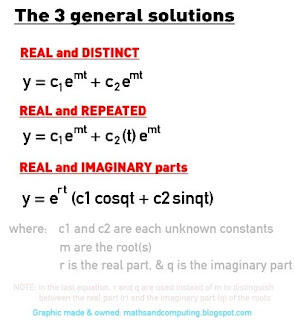
In a 2x2 matrix (two columns, two rows) the determinent is found by:
- multiplying the two terms on the main diagonal
- multiplying the two terms on the other diagonal
- subtracting the result in (2) from (1), ie. (1) - (2) = determinant
In other sized matricies, the determinent is found in a few more steps:
- write down the term in the top-left corner. Now, draw a line through all terms b
 elow it and in line with it. This leaves a smaller matrix. Write this matrix in brackets, next to the term you wrote earlier. You will multiply this later.
elow it and in line with it. This leaves a smaller matrix. Write this matrix in brackets, next to the term you wrote earlier. You will multiply this later. - Repeat step 1 for all the terms across the top row. Note you must follow the 'checkerboard of signs' when doing this.
- Now with all the terms you've got written down, find the determinents of the smaller matricies and multiply them by the term before it.
- Once you have done this, you have the determinant (click on the image to enlarge and see a graphic representation of this)
Checkerboard of signs - when you need to use this, it means that every second term must be multiplied by (-1) in the first row.
iff - used commonly in mathematics. Means if and only if.
Main Diagonal - the diagonal that runs from the top-left to the bottom-right of the matrix
EXAMPLE

An example can be found in the image on the right. If you cannot read it, click on it to enlarge.
IS A MATRIX SINGULAR?
A matrix is singular if and only if (iff) the determinant of that matrix is zero.
